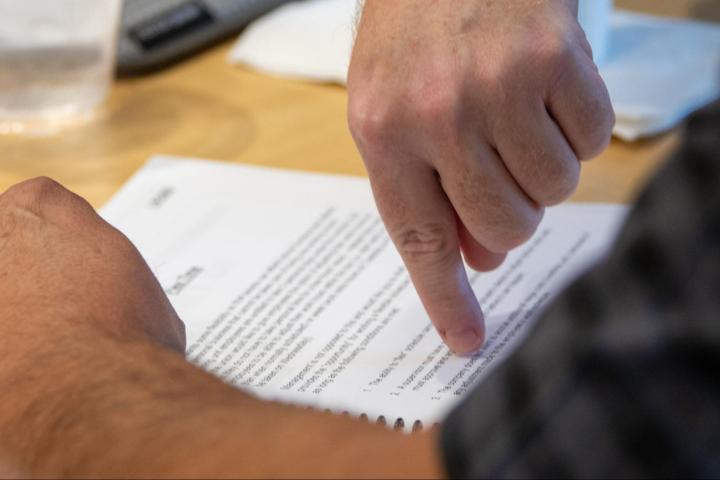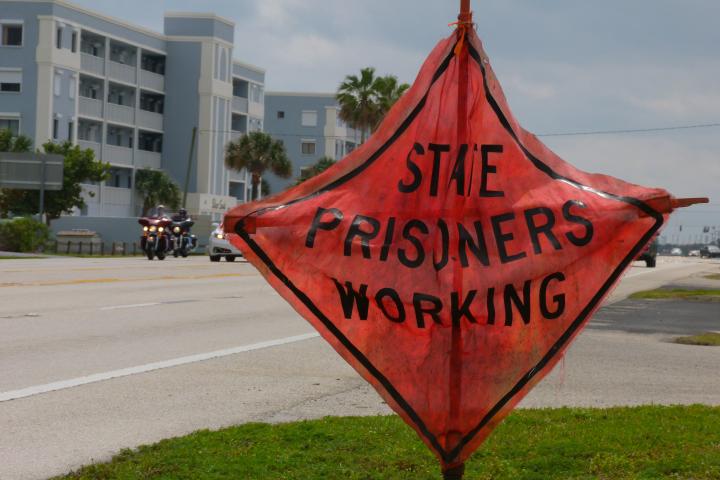Made in USA: Prison Labor Keeps Slavery Legal in 2024
“I earned 16 cents an hour working in the basement of Auburn Correctional Facility using heavy machinery to make the license plates many of us have on our cars right now,” said Jodi Anderson Jr. “Sure, you can refuse, but we all know what comes with refusing.”
Anderson Jr. stood before the New York State Senate on Feb. 12 to recount his experience working for Corcraft, an entity operating within the New York State Department of Corrections. Corcraft exploits incarcerated individuals to manufacture furniture, signage, cleaning supplies, etc. Children in New York’s classrooms often sit in chairs made using this legalized enslaved labor.
“My experience with Corcraft during my incarceration revealed the stark realities of what is often touted as a rehabilitative labor program,” said Anderson Jr. “While providing a rudimentary form of occupation, the work offered little in terms of fair compensation or genuine skill development that would aid in my reintegration into society.”
‘There is nothing wrong with giving them something to do,’ ‘You shouldn't have committed a crime,’ and ‘It’s only fair they repay their debt’ are common reactions to learning that prisoners earn an average of 65 cents per hour. This strange excitability towards punishment and rejection of rehabilitation reveals ethical incongruities and fuels recidivism and taxpayer spending.
Having navigated incarceration as a youth, Anderson Jr. stood before the NYS Senate as a testament to the transformative power of education and reformative employment opportunities. While incarcerated, Anderson Jr. received his associate degree through Cornell’s Prison Education Program and earned a bachelor's and master's degree at Stanford University.
Today, Anderson Jr. serves as director of technological innovation at Cornell University ILR’s Criminal Justice and Employment Initiative (CJEI), working tirelessly to help justice-impacted individuals like himself access employment and career development opportunities.
“One of the most glaring deficiencies of the Corcraft system is its failure to provide incarcerated workers with opportunities for educational advancement, upskilling, or reskilling that would facilitate meaningful career growth,” said Anderson Jr. “But there is no path to educate yourself within Corcraft…I see education as a pathway out, but you’re actively prevented from pursuing that.”
Corcraft’s spoken and unspoken demands often conflict with the higher education programs offered at facilities. “With Cornell’s Prison Education Program, they had some programming during the daytime that we weren’t allowed to go to, and the only way you can get over there is if you have someone cover for you or talk to one of the guards,” said Anderson Jr.
“It’s basically a negotiation to get [to the education building]. There’s a number of classes I had to forego during the daytime and could only take courses at night.”
Why don’t inmates simply prioritize their education over Corcraft? “Once you make it known that you want to pursue higher education, there is a backlash from the facility at large,” said Anderson Jr. “The moment you refuse to take on that assignment, there are a host of repercussions that you are going to suffer. Sure, you can refuse, but we all know what comes with refusing.”
Repercussions include solitary confinement, disciplinary action and the potential loss of good time credit—essential for any hope of an earlier release.
Inmates feel this coercion at every level. “Corcraft is how individuals not only pay for food and goods, but that’s how you take showers,” said Anderson Jr. “Getting a shower is guaranteed if you go and work at Corcraft. And so, there are a host of other privileges that are withheld from you if you have other pursuits outside of dedicating your time to working at the facility.”
“The inability to engage in meaningful work or pursue educational goals led to feelings of hopelessness and frustration - my only outlet was to rely on my fellow workers covering for me on the days I dared to go to school during the workday,” said Anderson Jr.
“Moreover, the strict limitations on discussing wages, bargaining for better conditions, or attempting to advocate for worker’s rights suppress essential aspects of worker dignity and agency, contributing to a sense of powerlessness and disenfranchisement.”
What is it we want for our incarcerated population? Even those who believe prisoners ‘deserve’ to ‘repay their debts’ may feel that there is something deeply disquieting about Corcraft: a coercive, exploitative and entirely legal labor system enshrined within our nation’s constitution (13th Amendment).
“As we consider the future of prison labor in New York State and beyond, let us commit to policies that uphold the dignity of all workers and support the successful reintegration of formerly incarcerated individuals into society,” said Anderson Jr.



